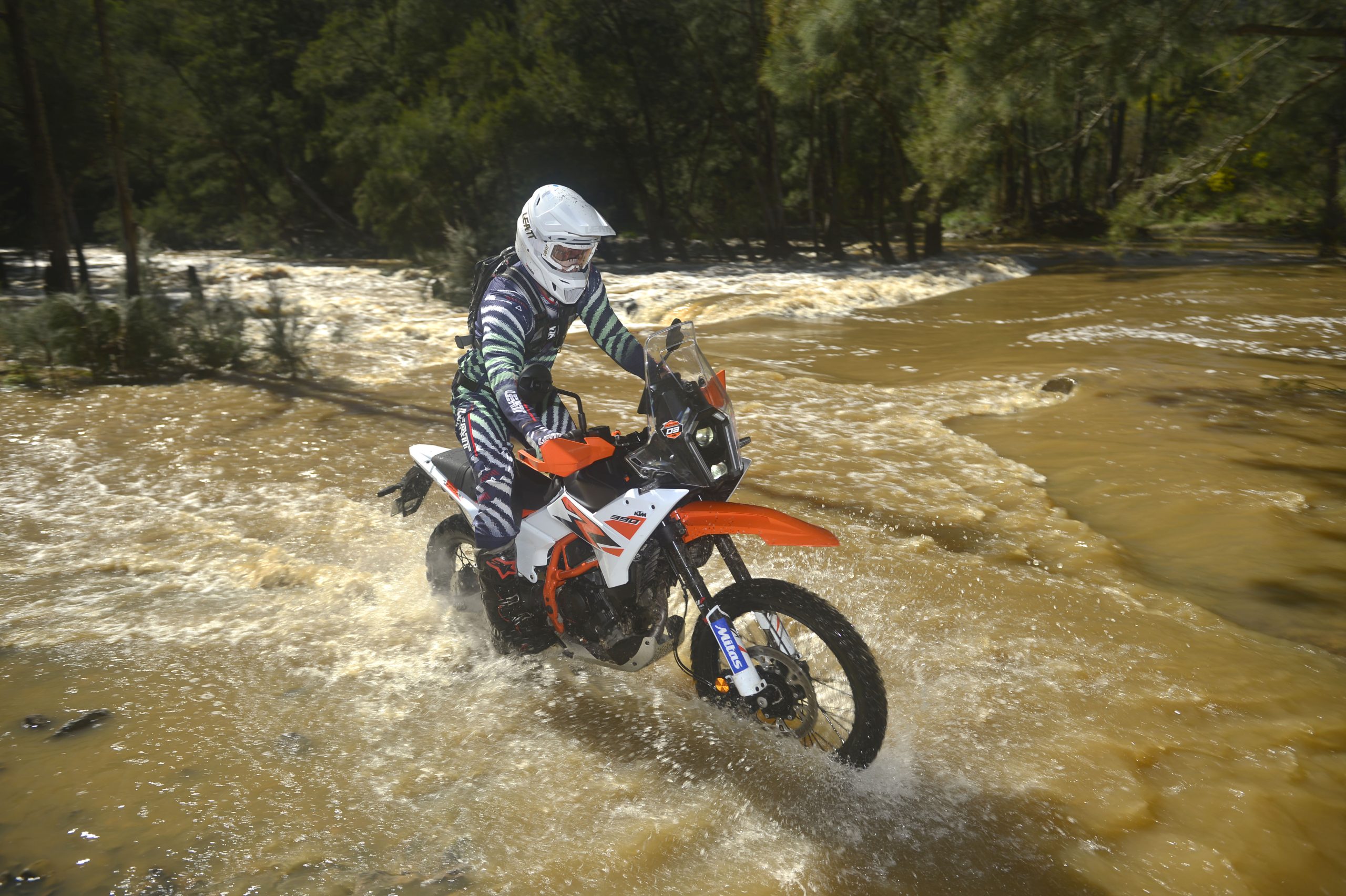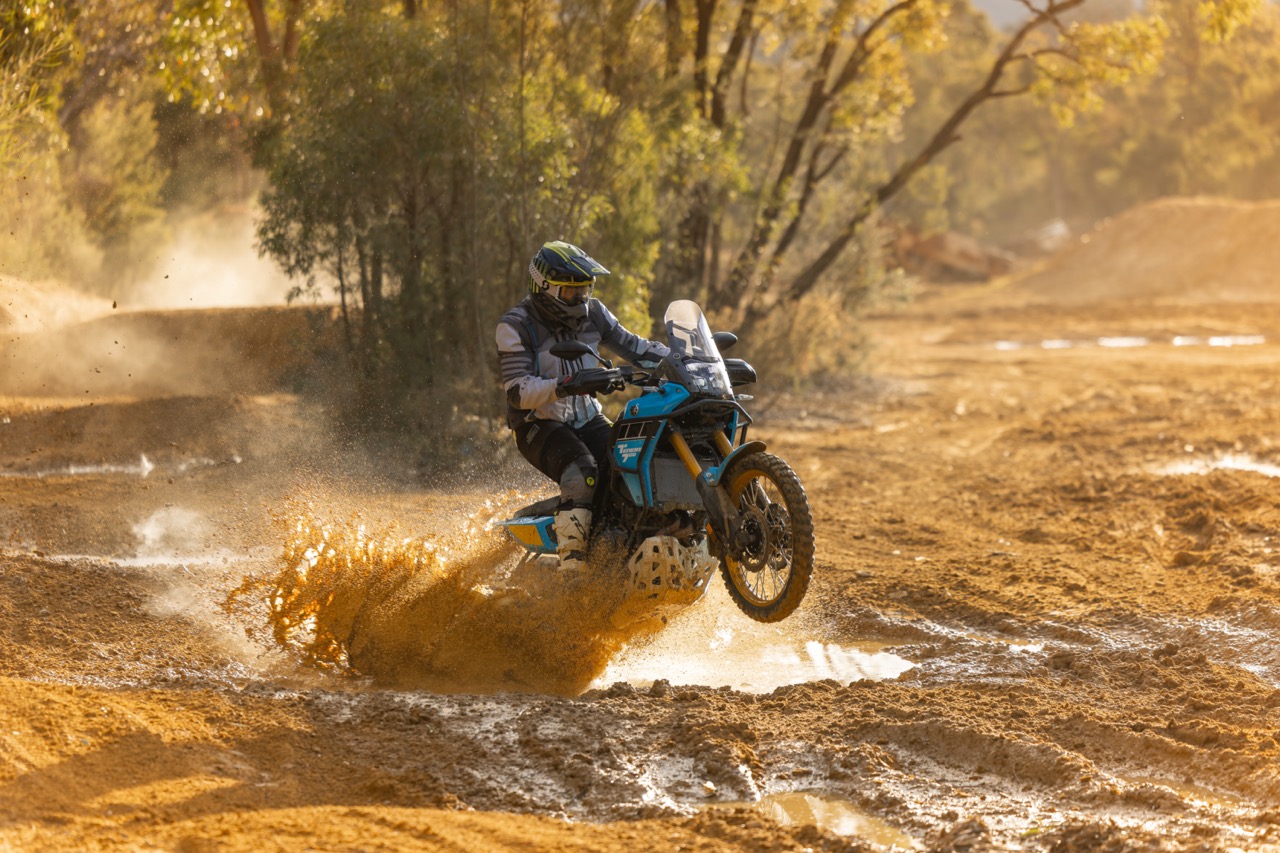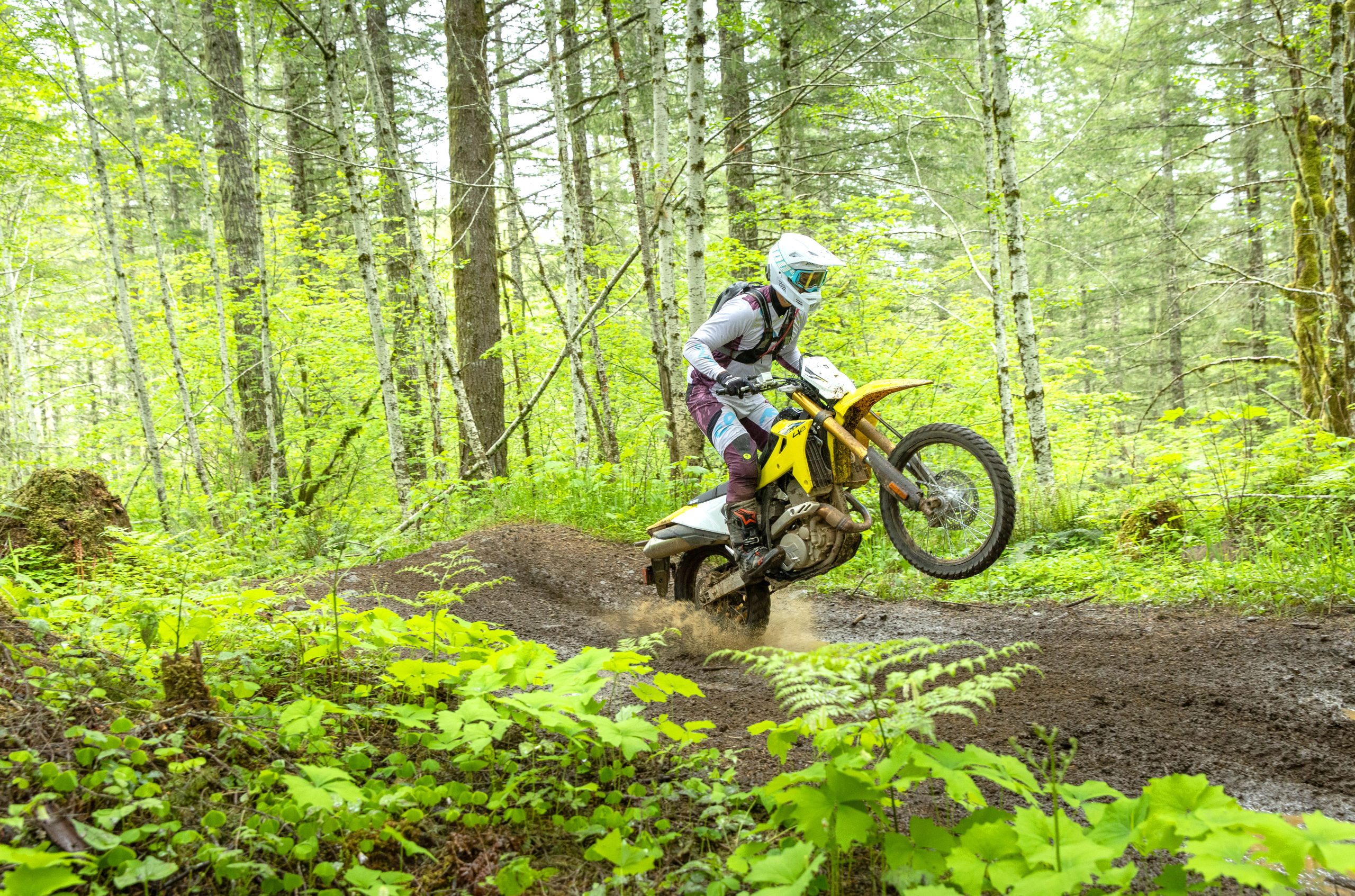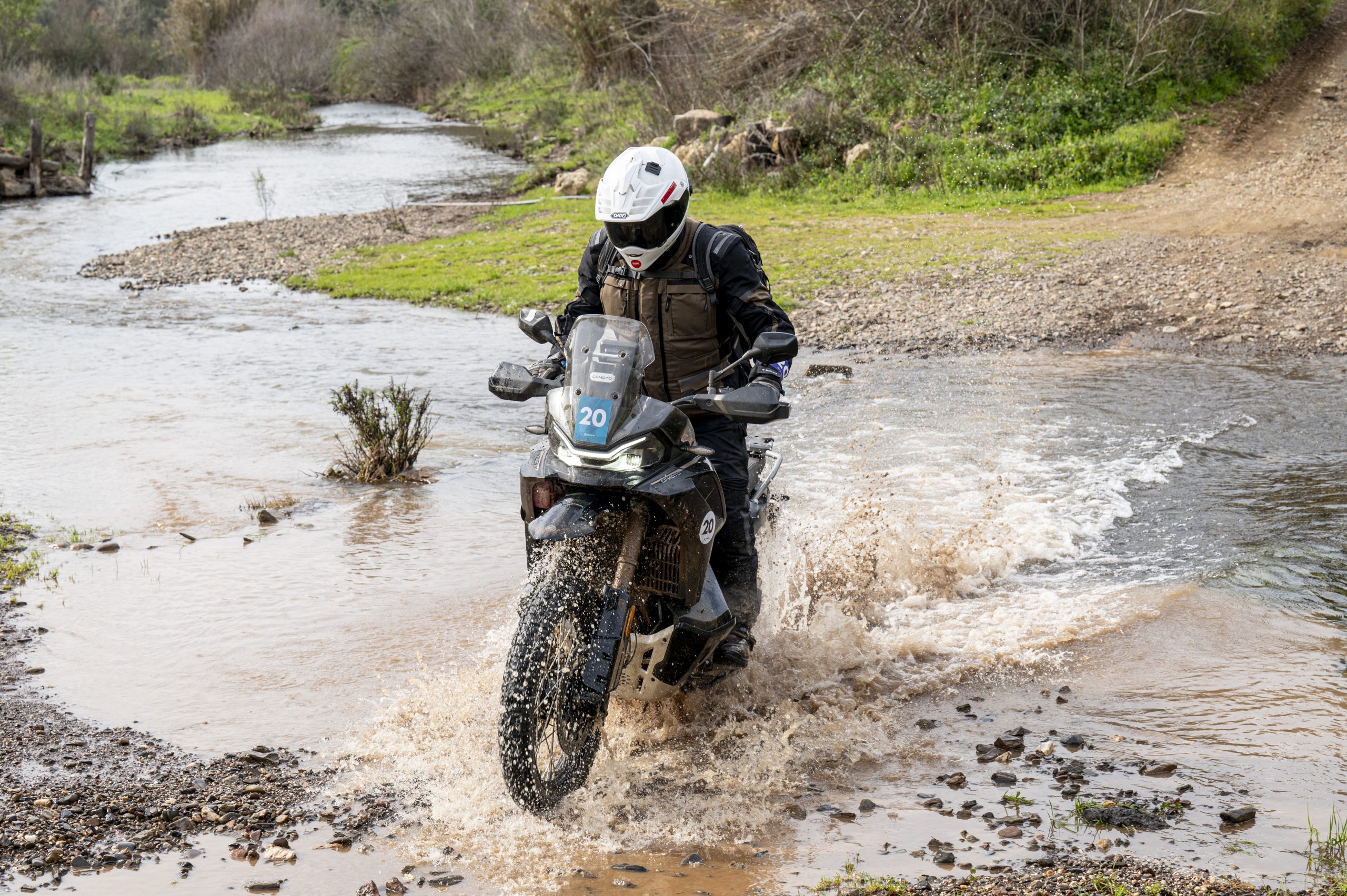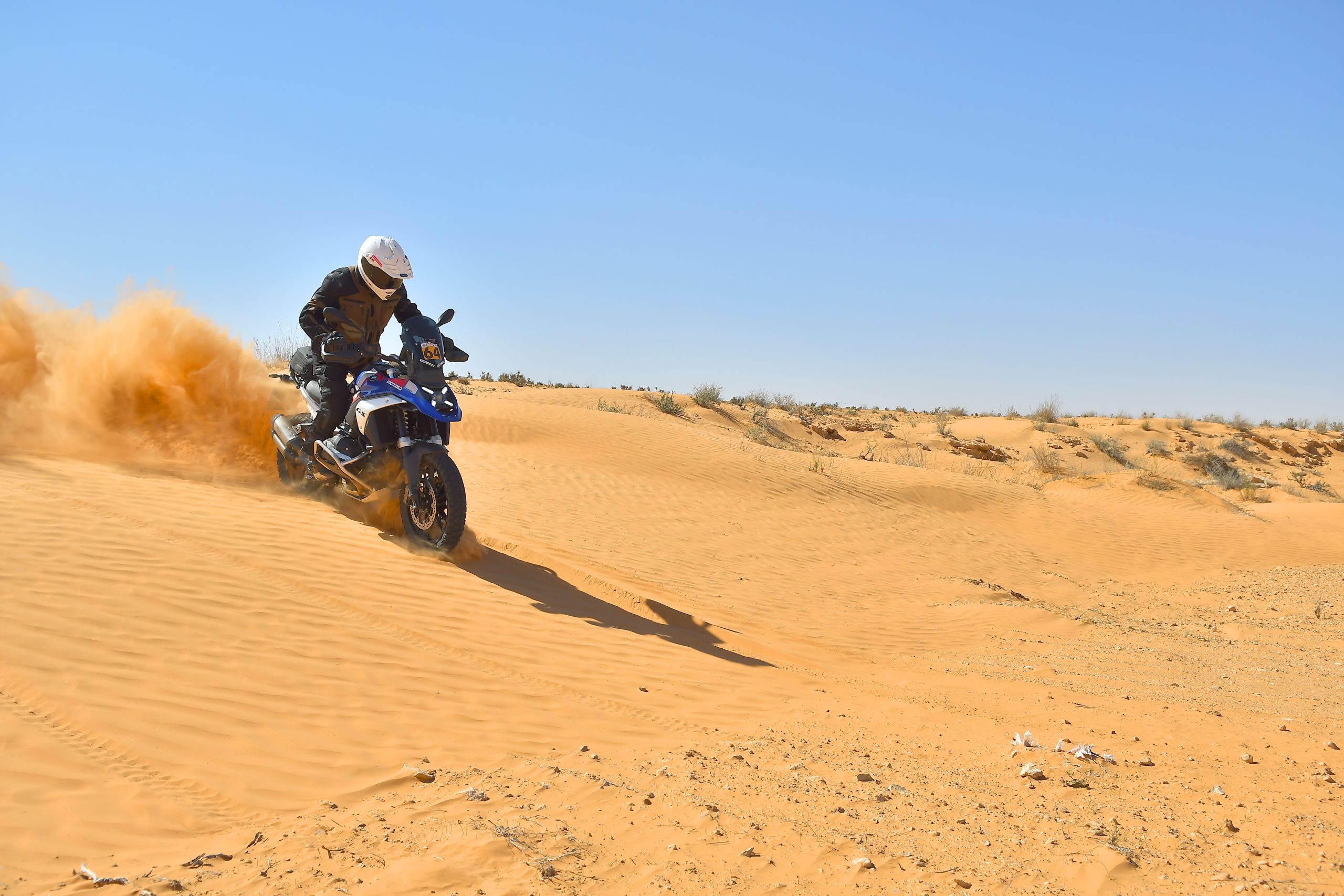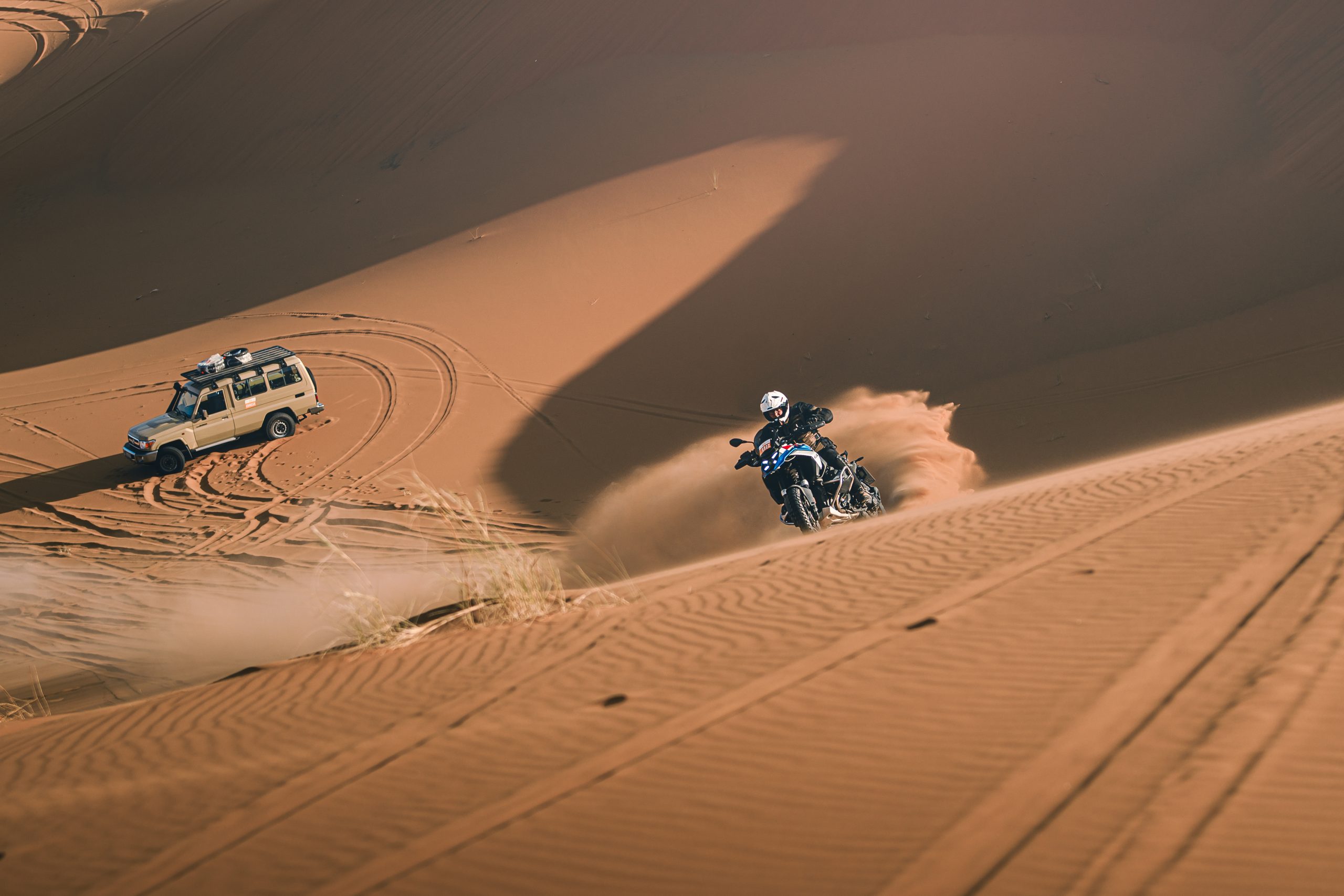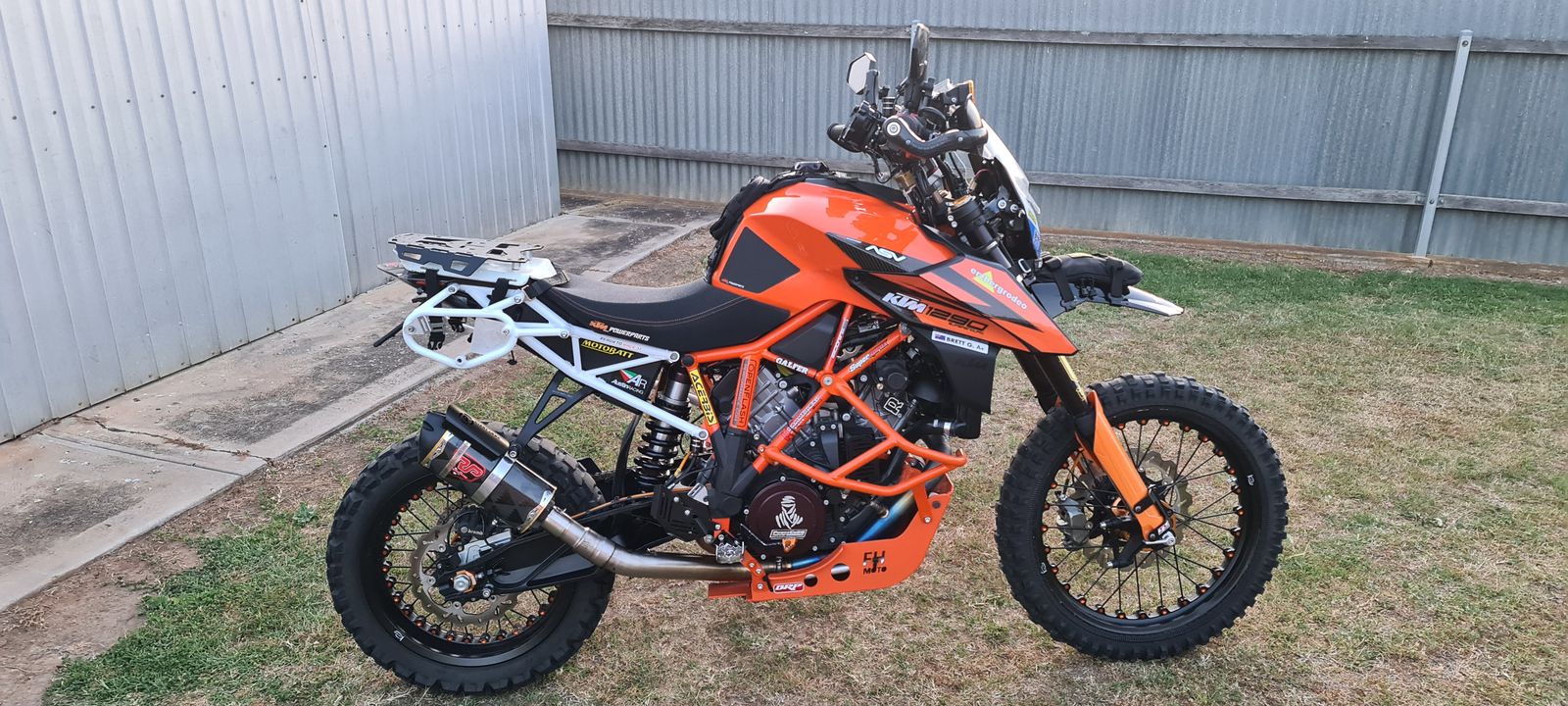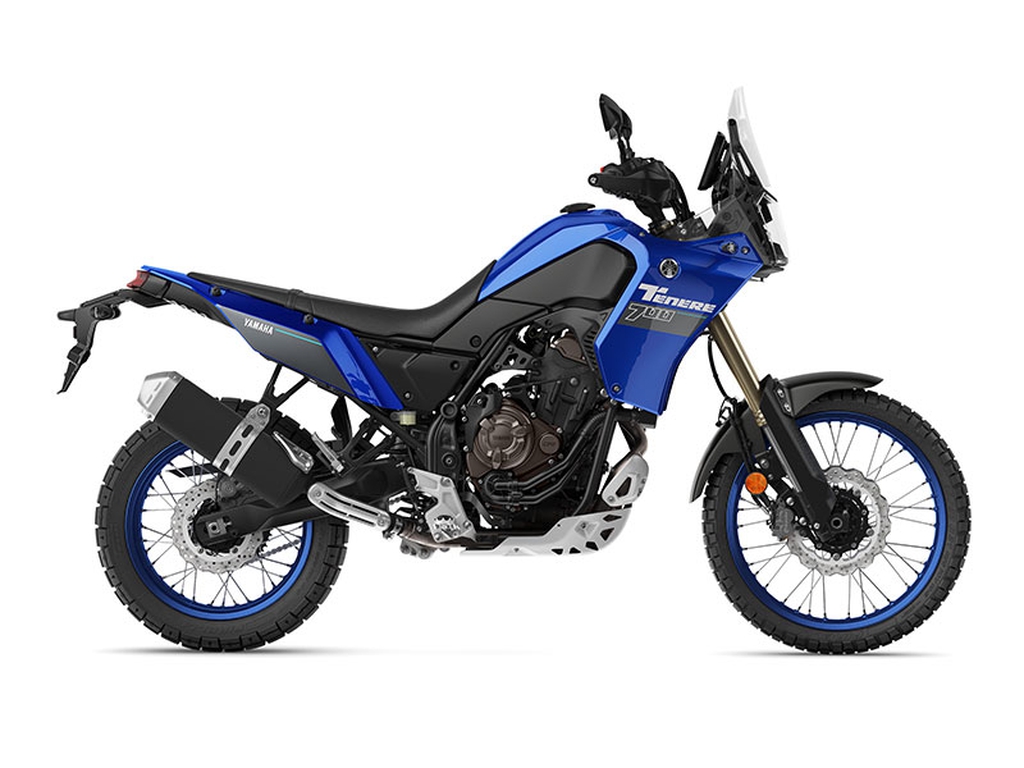When you think about it, people pretty much expect the same thing from a motocrosser or an enduro bike. Their purpose is well defined, and there’s not much confusion about what they’re built for — thrashing in the dirt, whether it’s for racing or just for a bit of bush-bashing fun. Sure, the enduro bikes might have a slightly wider set of expectations, but they’re still cut from the same cloth. An adventure bike, though, well… they’re a whole different beast. The riders that throw a leg over these machines come from all walks of life, and the bikes themselves have to do everything from long road stretches to busted off-road tracks, all while lugging a load of camping gear and keeping the rider in relative comfort. It’s a tall order, but that’s exactly what these adventurers are built to handle.
For nearly a decade, adventure riders were stuck with two choices – a 1200cc behemoth or a 600cc single that was like strangling a cat when riding down highways. There’ been a big push for small-capacity, high-performing adventure bikes in the 450cc bracket but also a push for all-conquering 800-900cc adventure bikes that can do it all. We think, as an adventure bike, you can’t beat the 800-900cc capacity. They’re just small enough to still manhandle and big enough to knock on out bulk highway kays in comfort and haste. They are the ultimate adventure bike capacity.
So, to see how the MY24/25, 800-900cc models stack up, we put five of the best contenders head-to-head on a two-day ride that had us grinning, cursing, and covering a fair few kays in both the dirt and on the blacktop. We had the Triumph Tiger 900 Rally Pro, KTM 890 Adventure, Ducati DesertX Rally, BMW F 900 GS and Husqvarna Norden 901.
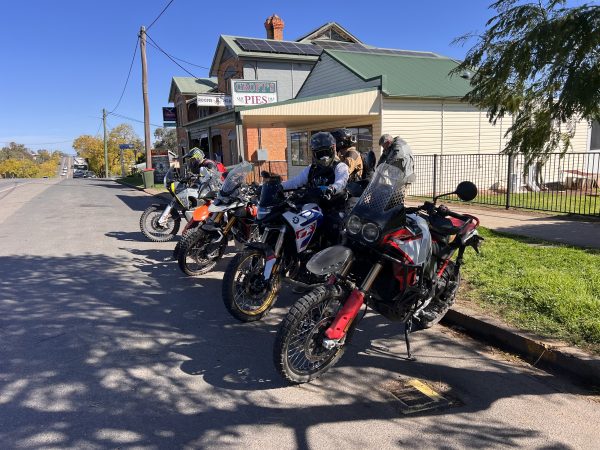
The route
With a tight turnaround before deadline we were limited on where and how far we could go so we tried to smash out as much as we possibly could in two days. We went from Sydney to Nundle in NSW and back again. The route was 50/50 dirt and bitumen with everything from highways to twisty back roads, to open dirt roads, fire roads, twin track and even a few kilometres of single track (we couldn’t help ourselves). We took the Barry Rd out of Nundle and climbed to 1000m before fording the infamous 20 river crossings.
The testers
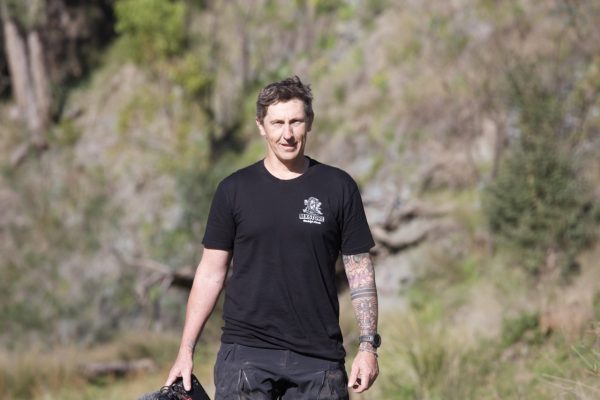
Guy Streeter
Age: 1980 – 44 years
Weight: 85kgs
Height: 180cm
Experience: Ridden dirt bikes since I was 11, Filmed dirtbikes for 20 years for nearly every magazine and manufacturer. Motocross, enduro, adventure and road. Rode across Australia on an Africa Twin.

Warren Jack
Age: 68, grumpy old bastard
Weight: 106kgs in socks and jocks
Height: 187cm when I stand up
Experience: Started riding on a rough as guts home built mini-bike as a teenager, joined St. George MCC at 17, got into enduro and motocross and also had a quick taste of desert racing, dirt track and road racing. Started writing for ADB magazine with issue number eight.
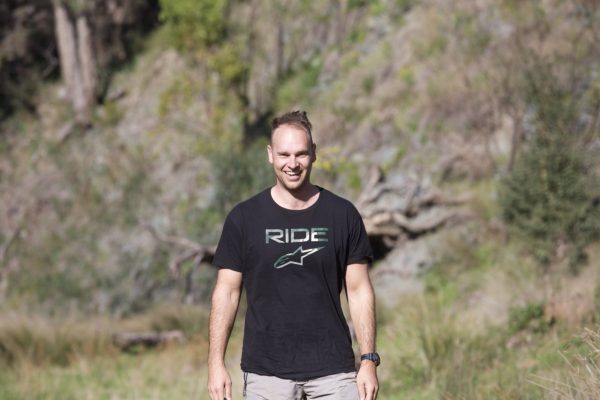
Mitch Lees
Age: 13/06/1986 – 38
Weight: 95kg
Height: 188cm
Experience: Worked for ADB for 15 years, edited for 10. Ridden almost every single dirt bike and adventure bike that’s come into Australia in the last 10 years. Ridden around Australia on a Kawasaki KLR650.

Mat Boyd
Age: 37
Weight: 95kg
Height: 182cm
Experience: Started riding as a 6 year old. Spent my childhood and teenage years traveling the country racing motorcycles. I raced motocross and supercross as an A-grade privateer into my twenties. I’ve even raced enduro, desert and supermoto at the highest level possible in Australia but the older I get, the more appealing adventure riding becomes.

Jeff Briggs
Age: 40
Weight: 90kgs
Height: 178cm/ 5’10
Experience: Began riding as a kid around 5-6yrs old, raced a little as a junior then had a break from bikes for 7-8 yrs. Got back on a bike and into FMX and then bought a motocross bike. Did some local motocross races then got into the off-roads and now race old fellas enduros, a little desert and some fun events like Transmotos.

KTM 890 Adventure R – The Rally Racer
The KTM 890 Adventure R is the dirt-focused adventure bike in this lineup. This bike feels like it was born for gravel, with its 889cc parallel-twin engine spitting out 93hp (69kW). This particular model we tested was paired with KTM’s aftermarket 52mm WP fork and WP Traxx Shock which was firmer and more compliant than the stock WP gear. It’s got a sturdy chromoly tubular frame that helps keep the bike nimble despite its 216kg wet weight.
The 890 adventure bike really shines when you hit rough terrain. It has excellent stability with the bulk of the weight down low thanks to the clever fuel tank design that drops down in line with the engine. The 21-inch spoked front and 18-inch spoked rear wheels wrapped in Dunlop D606 tyres for this test were the pick of the bunch. They’re the best off-road adventure tyre, getting the most traction but still wearing fairly well on the bitumen. In Rally mode, you can fine-tune throttle response and traction control, which is a dream for handling slippery, loose dirt. Braking is equally solid, with dual 320mm discs up front and a 260mm disc in the rear, one finger stuff.
This bike doesn’t skip a beat on the highway either, but it’s off-road where it truly comes alive. While the seat height might be a bit intimidating for some, the cockpit is well laid out, and the suspension handles everything from rocks to ruts with ease.
The motor on the KTM is fantastic — really usable in all conditions. I also loved the Dunlop D606 130/90-18 tyres; they were by far the best out of the lot, especially in the dirt. The bike feels the lowest to the ground, which gave me a bit more confidence, but I did find I had to bend over more to reach the handlebars, which wasn’t ideal for longer stints of standing. The dash setup is great, really intuitive, and it was easy to navigate through all the options and settings. Overall, it’s a solid package for off-road riding.
Best In Class
Off-road ability
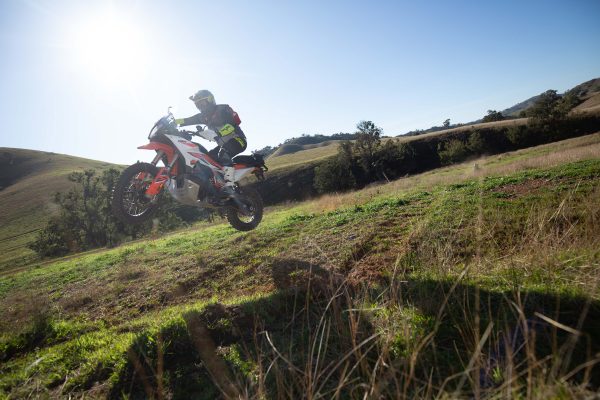
The Chasing Pack
Jeff Briggs
“The KTM performed exactly how I expected it to ride. I loved it off-road, it just felt right. The aftermarket suspension never did anything unpredictable, which is what I like. The cockpit is lower, which helped me touch the ground in the off-road sections. The tyres, though not as sticky on tarmac, were perfect in the gravel.
The bike felt more planted compared to the others, and even though it’s a bit heavy, it carries the weight well. No complaints from me, I had a blast!”
Mat Boyd:
“The KTM feels like a swollen dirt bike. Off-road, it’s a weapon, and that grunt off the bottom is a blast, even on the road. It’s wider between the legs than I’d like, but that’s a small gripe. The engine is smooth and powerful, and the cockpit is easy to navigate.
The tyres gave it a proper rally feel, and I could see myself tackling some seriously rough trails on this one. It’s a bike I’d be happy to spend a whole day on, no worries.”
Guy Streeter:
“As you’d expect, the KTM is a standout off-road. It’s an overweight enduro bike with some cool tech, and it handles the dirt like a champ. The suspension isn’t quite as good as the Husky, but it’s a close second for me. What really stood out was how easy it was to switch between modes.
It’s a straightforward bike to use. When you want to hit a jump or two, you can, and that flat seat makes it easier to shift back and forth when the terrain gets gnarly.”
Warren Jack:
“The KTM and Husky may come from the same factory, but they’re not identical. The KTM fitted me better, with its flatter seat and narrower stance. The menu was easy to navigate, and performance on both sealed and unsealed roads left nothing more to be asked for in terms of engine response, handling, and braking. The KTM has the widest footpegs of the lot, which made it comfortable to stand on all day. I could jump on this thing for an extended off-road adventure, no sweat.”
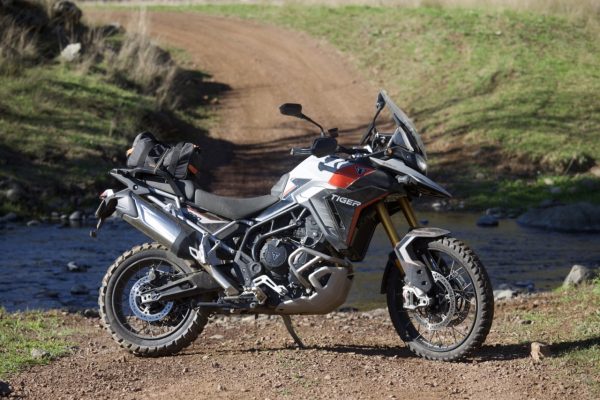
Triumph Tiger 900 Rally Pro – The Surprise All-Rounder
Most would think the Triumph Tiger 900 Rally Pro adventure bike would be the most road-focused bike of the group, but that wasn’t the case. With its 888cc inline triple engine delivering 106hp (79 kW), the Triumph’s power is silky smooth, no matter the surface of the road. The Showa suspension offers 240mm of travel at the front and 230mm at the rear, giving it enough resistance for most off-road trails, though it’s definitely softer than the KTM or Husky.
Where the Triumph stands out is its comfort. With a plush seat, adjustable windscreen, and heated grips, it’s designed for long stretches of riding. The 18cm TFT display is a breeze to use, letting you toggle between riding modes like Road, Rain, and Off-Road Pro. On the highway, it’s stable and powerful, but off-road I couldn’t believe how well it handled and how easy it was to drift. Maybe it was the tyres or maybe it’s just how stable the bike felt getting loose but it was the easiest to drift in the gravel.
Braking comes from Brembo Stylema calipers clamping down on dual 320mm front discs and a 255mm rear disc, and the cornering ABS works like a charm, particularly in Off-Road Pro mode.
The Triumph adventure bike was the biggest surprise for me. It’s much better off-road than I thought, and it’s competent in so many different terrains. I loved the power, suspension, and just about everything about it.
It does feel a bit more like a big adventure bike compared to the others, but it’s still capable off-road. It has the best motor in the class because it’s so smooth. The Rally mode was excellent, and I found I could drift the best on the Triumph. It just handles so well for a bike its size.
Best In Class
Drift demon
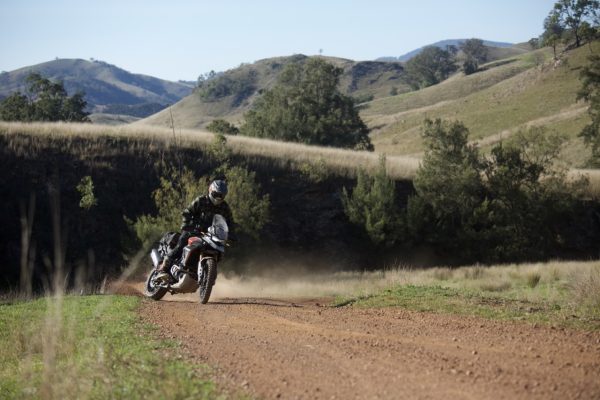
The Chasing Pack
Jeff Briggs:
“The Triumph surprised me. It was a real pleasure on the road, with the motor pulling strong all the way through the rev range. Everything about it felt premium, but it didn’t shy away from a bit of dirt either. The suspension was softer than I’d like, but it handled everything without fuss. I could easily see myself cruising along the highway on this one. It still felt a little road-oriented to me but nowhere near as much as I expected it to.
Mat Boyd:
“If I had to pick one that was best at big touring, it’d be the Triumph. The engine is smooth and torquey, and the suspension is plush, great for cruising. The seat locks you in one spot, which got annoying, but it’s a comfortable ride for long days in the saddle. Off-road, it was fine, but you can feel it’s built more for comfort than for hammering through technical sections.”
Guy Streeter:
“The Triumph was the strongest on the road and in the open dirt. The motor was superb, the brakes were strong, and the gearbox felt great. It was super easy to use, especially with all the tech. I didn’t enjoy it off-road as much as the other bikes, but for road performance, it’s hands down the best of the bunch. You’ve got heated seats, heated grips, everything to make the long rides more enjoyable.”
Warren Jack:
“The Trumpy was the obvious choice for the long sealed stretches and open road. The triple-cylinder engine was as smooth as butter, and while it was a little wide between the knees, the standing position was solid. The suspension handled all the bumps we threw at it, and the electronics were fairly simple to figure out. It sounded the best of all the bikes, though I reckon I’ll miss the rumble when we’re all on EVs. Off-road, it’s good, but this bike feels more at home on the big stretches of dirt.”
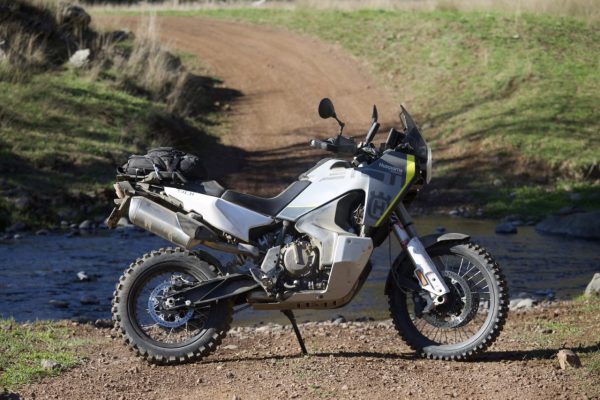
Husqvarna Norden 901 – The Off-Road Maverick
At first glance, the Husky Norden 901 seems bulkier than the KTM adventure bike, especially around the tank, but it doesn’t take long to realize this bike is all about off-road performance. Powered by an 889cc twin (the same as the KTM), it kicks out 77 kW of power and has a solid 100 Nm of torque. What sets it apart is the suspension (in standard trim) — Husky’s WP APEX system gives you 220 mm of travel in the front and 215 mm in the rear, offering superb stability and comfort.
The wider stance may not be for everyone, but for taller riders, it feels stable and planted, especially in technical terrain. The electronics are user-friendly, allowing easy access to ride modes and ABS settings, while the Dunlop D606 tyres grip well in the dirt. If you’re looking for a serious off-road machine with a bit more comfort than the KTM, the Norden delivers.
The motor on the Husky feels similar to the KTM in terms of performance, but the bike feels a bit bigger and heavier. It’s a demon to ride off-road, especially in the more technical sections, but it’s also great in the open stuff even though it feels bigger. The seating and standing positions are more comfortable than the KTM, which is a plus if you’re spending long days in the saddle.
The screen wasn’t as easy to navigate as the KTM’s, but as an all-rounder, it’s probably the best bike of the bunch.
Best In Class
Most planted off-road
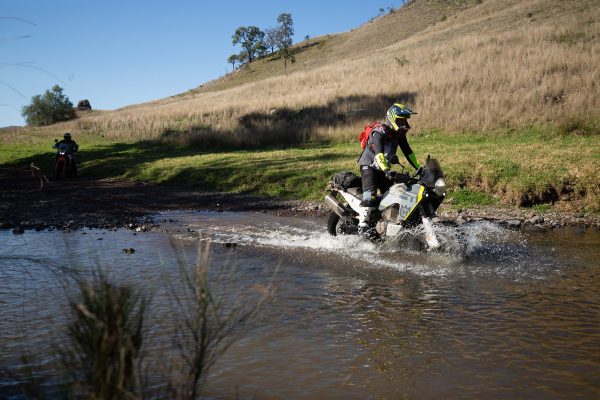
The Chasing Pack
Jeff Briggs:
“The Husky felt bulkier than I expected, but it rode beautifully. The suspension and off-road tyres made it a dream to handle on the dirt, and the cockpit felt open and roomy. It was definitely one of the best off-road bikes of the bunch. The dash is really intuitive, and it feels planted, even in more technical sections. It’s got more weight than the KTM, but I think that works in its favour for stability.”
Mat Boyd:
“The Husky shares a lot with the KTM but has its own feel. It’s slimmer between the legs, and the suspension is incredible. The dash and mode selection were easy to use, and this thing soaked up everything we threw at it. The tyres were also a great choice for off-road. It just gives you confidence, especially when you’re standing up for long stretches.”
Guy Streeter:
“The Husky was my pick of the bunch. The upgraded suspension helped with confidence off-road, and the Dunlop tyres were perfect for dirt. I’d take this over road performance any day because it’s built for off-road adventure. The wider stance wasn’t an issue for me, and I liked the suspension’s ability to adjust for rough terrain.”
Warren Jack:
“I found the Husky a little wide for my taste, and the split-level seat wasn’t my favourite but the suspension soaked up the bumps, and the engine performance was great. For those doing long days on mixed terrain, comfort is key, and the Husky handles that well. If I were buying one, I’d add some ‘bar risers to make the standing position more comfortable.”
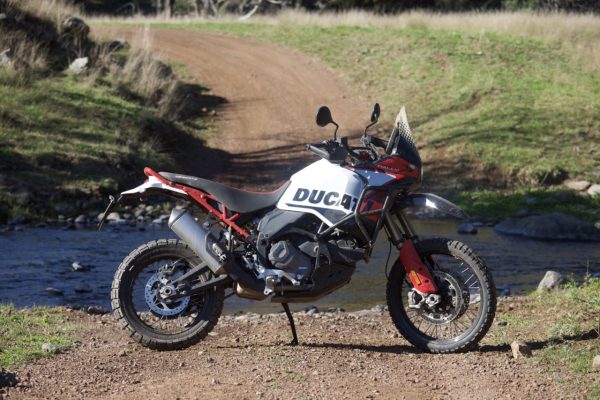
Ducati DesertX Rally – The dirtbike for adventurers
A Ducati may not be the first bike you think of for off-road, but the DesertX Rally is not your average Ducati and it proved itself to be quite the contender. Powered by a 937cc Testastretta V-twin, it puts out 110hp (82 kW) and 92Nm of torque. The Ducati’s fully adjustable KYB suspension gives you 250mm of travel in the front and 240mm at the rear, more than enough to tackle off-road adventure riding.
What sets the DesertX apart is its narrow, dirt bike-like feel. The bike handles off-road stints so well, and the modes are incredibly customisable but we were frustrated on the first day when we thought you could only change the maps while in motion. We worked out that the mode you want must be selected by holding the mode button from the main display not from the settings menu.
If you turn on the bike and let the normal screen appear, then hold the mode or enter button about three seconds, it will bring up the riding mode menu, then a quick tap to select. Throttle must be shut and brakes not applied. It will only let you tune the modes if you access it through the settings once you’re in the right mode. Once we’d picked out mode for the terrain we were riding, the bike performed impressively both on-road and off.
The Brembo brakes give you excellent stopping power, and while the fork can blow through on harsher hits, overall, the Ducati is surprisingly adaptable for a mix of road and dirt.
The standing position on the DesertX was incredibly comfortable. I had a bit of trouble with the gear shifter — it was hard to reach and change gears at times — but I really liked the brake lever, especially the way you could flip it up so it was easier to find when standing or sitting.
The suspension was good overall, but it felt a little soft and choppy over embedded rocks in the dirt. The motor, though, was excellent — super torquey, with loads of power. The best part was how adjustable the maps were. The flat seat is comfortable too, and the power delivery can be pretty aggressive if you want it to be. It’s a proper dirt machine.
Best In Class
DIrtbike skinny
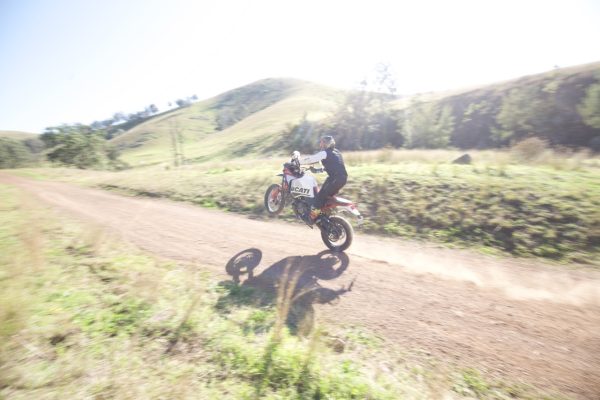
The Chasing Pack
Jeff Briggs:
“The Ducati felt like a heavy enduro bike, which was great in the dirt. The motor and gearbox were solid, but the fork needs work. Changing modes was a little clunky, which was annoying, but it’s a fun ride overall. It’s definitely got that Dakar vibe going on, and it’s more nimble than I expected.”
Mat Boyd:
“The Ducati feels nostalgic, like a Dakar bike from the 90s. It’s nimble and gives you plenty of room to move around. The suspension is good, but I also struggled when changing modes as it took a little more concentration. That said, the engine response was great, and it handled itself well on both dirt and road sections. It’s a solid all-rounder.”
Guy Streeter’s Thoughts:
“I’m not usually into tech-heavy bikes, but the Ducati was adaptable in different modes. It’s comfortable, and the engine was lively. My only gripe was with the fork blowing through on harsher hits, but I reckon a bit of tweaking would fix that. It felt like a proper enduro bike, which is what you want when things get tricky.”
Warren Jack’s Take:
“The Ducati felt more comfortable than the Husky for me, thanks to its narrow build. The engine performance was lively, and it handled dirt and road equally well. The TFT screen could use bigger fonts, but overall, it’s a solid all-rounder. The pillion pegs did get in the way on low-speed U-turns, but that’s easy enough to fix.”

BMW F 900 GS – The Road Warrior
The BMW F 900 GS is the most road-oriented bike of the group, but that doesn’t mean it can’t hold its own off-road. Powered by an 895cc twin, it puts out 105hp (77 kW) and 93Nm of torque. The bike features BMW’s premium tech package, including a TFT display, keyless start, and heated grips, all of which make it feel like a high-end machine.
The suspension is where the BMW adventure bike starts to show some weaknesses. While it’s adjustable, it felt under-sprung on rougher terrain, and it transmitted more buzzing and feedback through the footpegs than the other bikes. That said, the road manners of the F 900 GS are hard to beat. It’s fast, smooth, and comfortable for long stretches on the highway.
The standing position on the BMW is excellent, and it’s got one of the smoothest motors of the lot, no doubt about it. It’s comfortable when you’re sitting down too. The Rally mode on the dirt was one of the best setups with just the right amount of ABS, Traction Control and horsepower to slide and find traction. The Metzeler Karoo 4 tyres were decent but not as good as some of the others.
The seating is a bit low, and the stepped seat gets in the way if you’ve got a backpack on. The brakes were great — probably the best on-road of all the bikes. My only gripe was with the windscreen; it’s too small and buffered my head quite a bit on the highway. Also, it only carries 14 litres of fuel, which isn’t huge for Aussie roads, but it felt like the smallest bike, which could be a good fit for women or smaller riders.
Best In Class
Best Bitumen burner
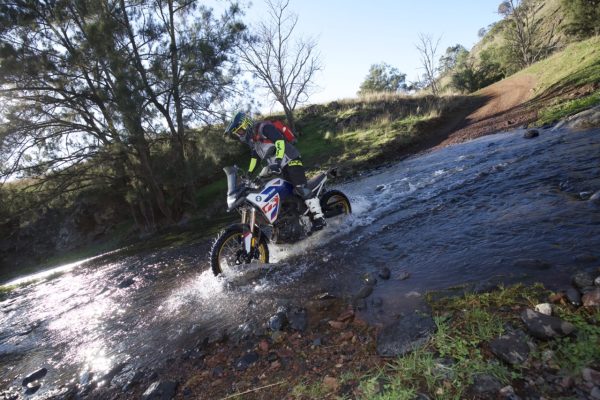
The Chasing Pack
Jeff Briggs:
“The BMW was my least favourite. It handled well on the road, but the footpegs are too far back for my liking. I struggled to get forward when standing up, and the suspension felt harsh off-road. But on the road, it’s definitely the smoothest.”
Mat Boyd:
“The BMW looks great and sounds even better with the Akrapovic exhaust. But the suspension didn’t feel right for technical off-road stuff. The seat is flat and allows you to move, but I noticed a lot of clunking from the rear shock. On the road, though, it’s fast and fun.”
Guy Streeter:
“The BMW felt expensive, and the quality showed, but the suspension didn’t hold up for rougher terrain. The tech is impressive, but the footpegs were too small for comfort. Still, if you’re doing mostly road riding, it’s a great option.”
Warren Jack:
“The BMW had the best standing position of the lot, but the seat was as hard as a rock. It handled road and dirt fairly well, but the suspension needs tuning for technical off-road sections. I did notice some jerkiness in throttle response at lower speeds, but it’s nothing major. For longer road trips, though, this is the bike to go for.”
Same but different.
After two days of riding, we learned that these five bikes each bring something different to the adventure bike table. The KTM and Husky are perfect for off-road warriors looking to tackle more challenging dirt roads, while the Triumph and Ducati were great at road and dirt and despite their road-based background really surprised at how good they were in the more open dirt roads. The BMW was the standout on the road.
This test was not a shootout because the bikes aren’t all the exact same. It was a comparison test where we look at where each bike shines and who would suit what bike. What we were most impressed with was how well-specced these bikes are.
They all came with features like heated grips and cruise control which used to be premium options. They’re also incredibly adjustable. Thanks to the incredibly adjustable mapping, ABS and suspension, a road rider new to dirt would be comfortable while a dirtbike rider who’s never got the knee down on the bitumen wouldn’t feel out of place racing though the twisties.
These five bikes are now the premium offerings when it comes to big-bore adventure bikes. Forget the 1200cc jobs we used to rave about, these are just as good on the highway but far more competent in the dirt. No one needs 1200cc of power in the dirt but 800-900cc of drifting hooliganism, now that’s the sweet spot.
At the end of the day, it all comes down to what kind of riding you prefer. Not one of these bikes were inadequate at anything, all of them are incredibly well-mannered off-road and you’ll have more fun getting from the front door to the camp fire than you can on any other machine.
